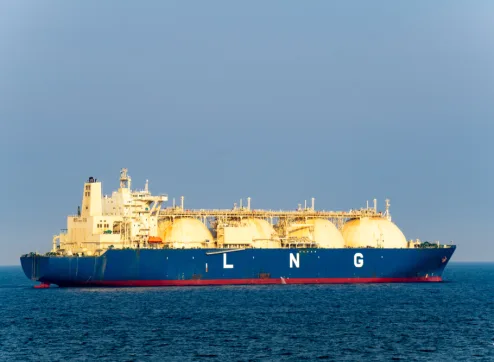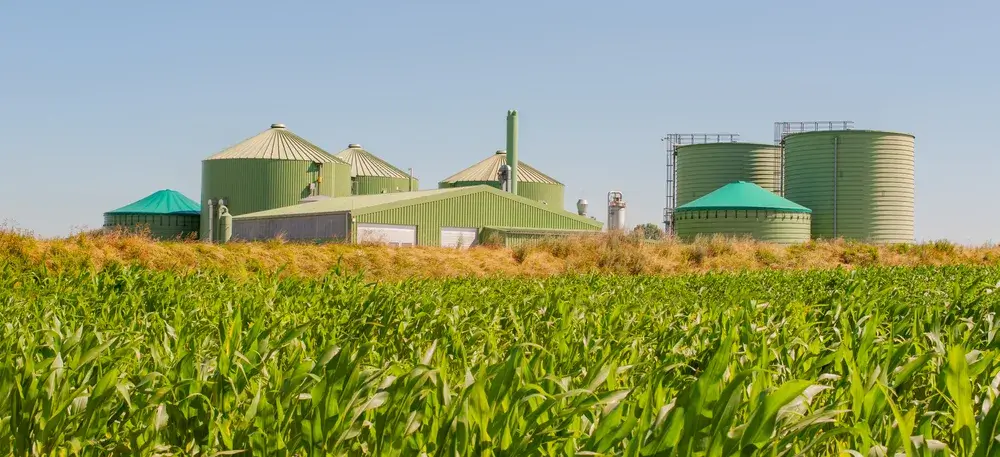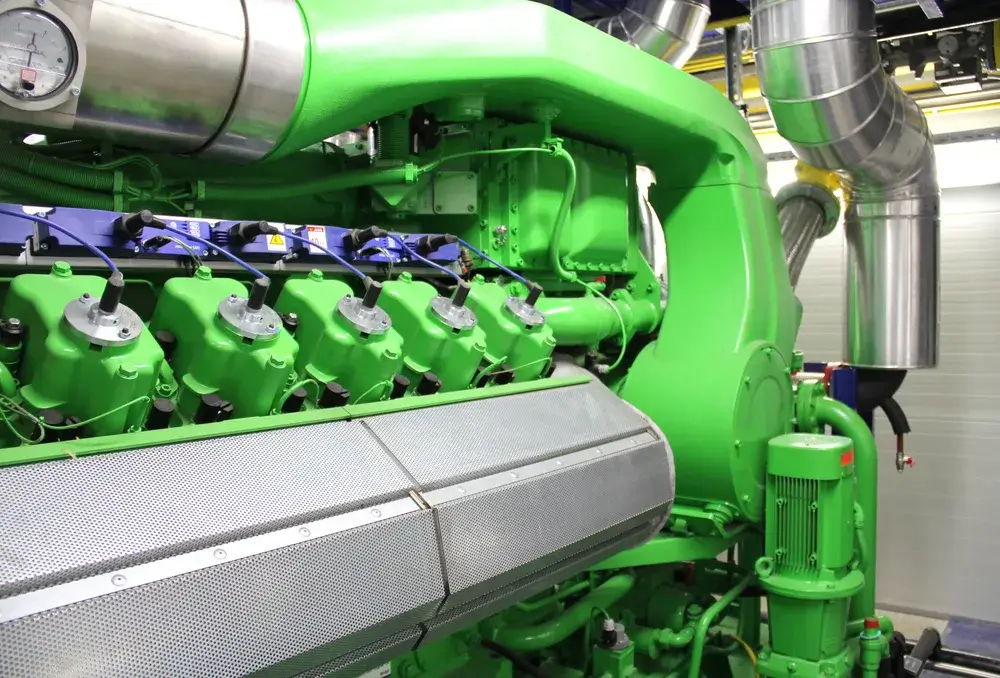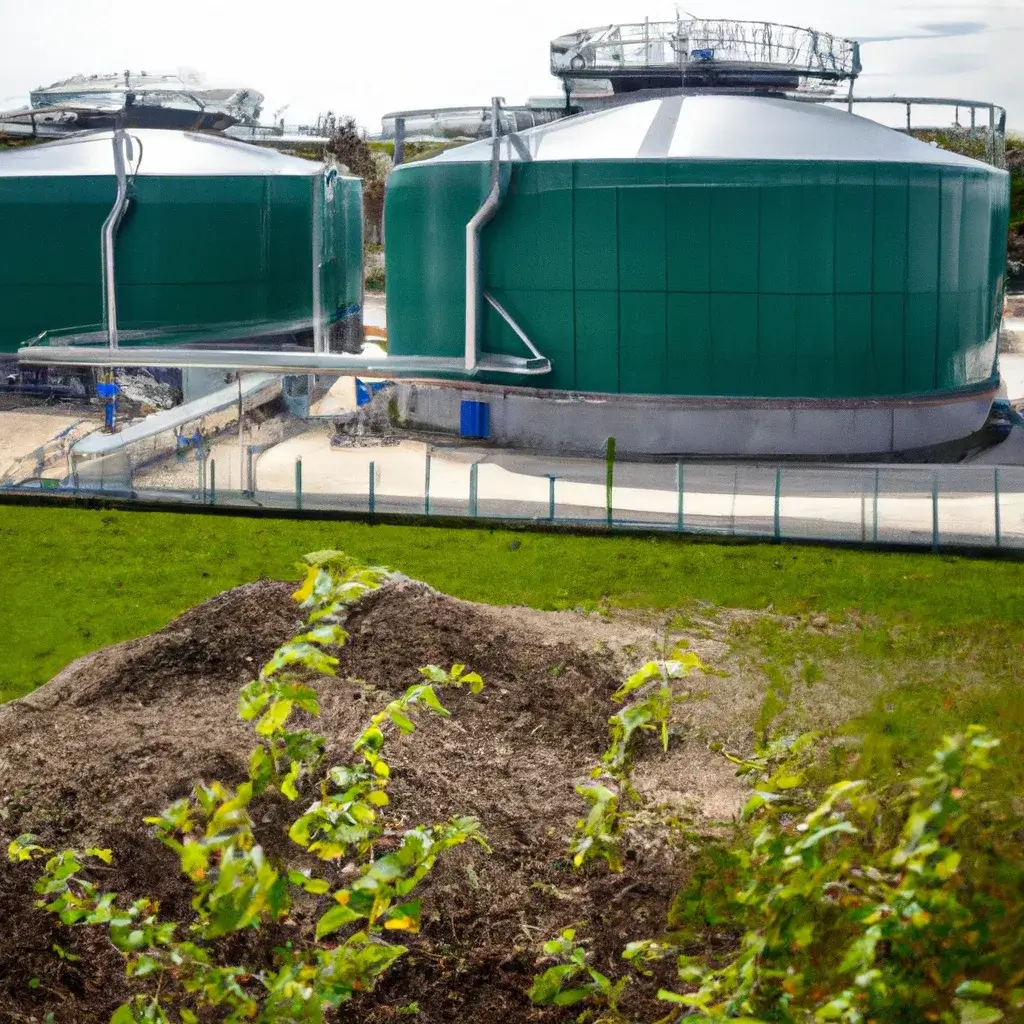What is LNG?

LNG, short for “Liquefied Natural Gas”, represents a technological revolution in the energy landscape. Through the transformation from a gaseous to a liquid state, LNG enables the efficient transport and storage of natural gas over long distances. But what exactly is behind these three letters?
The Basics
LNG stands for “Liquefied Natural Gas” which refers to natural gas that is transformed into a liquid state through the process of cooling it to extremely low temperatures. In this liquefied state, the volume of the natural gas is reduced to approximately 1/600th of its original gaseous volume, making it much easier to transport and store.
The formula of LNG mostly consists of methane, although it may also contain small amounts of other gases such as ethane, propane, and butane. This liquefaction process enables efficient transportation of natural gas over long distances, even in areas where pipelines are not feasible.
From gas to liquid: The liquefaction process
First, the natural gas is purified to remove contaminants such as water, sulfur, and other particles in order to obtain a pure source of methane. This purified gas is then cooled to extremely low temperatures, typically around -162°C, at which point the methane transitions into a liquid state. Special refrigeration systems and heat exchangers are used to achieve the necessary cooling.
The resulting LNG is not only more compact and easier to store, but also enables safe and efficient transportation over long distances without significant energy loss. This liquefaction process represents a significant milestone in making natural gas globally accessible.
Transport and storage
The liquefaction of natural gas into LNG has revolutionized the overcoming of geographical boundaries and the global trade of this valuable resource. Due to its reduced volume, LNG can be transported across oceans and continents in specially designed tankers, known as LNG carriers. These ships are equipped with highly insulated storage containers that maintain the LNG at the required extremely low temperatures to preserve it in a liquid state.

After arriving at the destination, the LNG is stored in large storage tanks at specialized terminal facilities before it is regasified and injected into the gas network or used for other purposes. These transportation and storage capabilities enable reliable supply of this important energy source to regions that are distant from major natural gas reserves.
Applications of LNG
In many regions of the world, LNG is used as the primary energy source for power plants that generate electricity, offering cleaner combustion and lower emissions compared to coal or oil.
Furthermore, LNG is being increasingly utilized as a fuel in the shipping industry due to its lower emissions of pollutants compared to traditional marine diesel. In certain countries, LNG is also being employed as an alternative fuel for trucks and buses. In the industrial sector, LNG serves not only as a fuel but also as a raw material for chemical processes and the manufacturing of products such as plastics.

These diverse applications highlight the potential to replace traditional fossil fuels in various sectors and contribute to the transition towards a more sustainable energy future — one of the pros of LNG.
Safety and Environment
LNG, despite its many advantages, also presents a “double-edged sword”, particularly in terms of safety and the environment. Due to the extremely cold temperatures and high pressure at which LNG is stored, accidents such as leaks or explosions can be potentially catastrophic. Therefore, stringent safety protocols and comprehensive training for personnel working with LNG are absolutely essential.
Environmental concerns arise mainly during the extraction and processing of natural gas into LNG, as this can result in the release of greenhouse gases. While LNG burns cleaner than many other fossil fuels, there is still concern about methane emissions, which is a potent greenhouse gas. Addressing these challenges requires continuous monitoring, research, and innovation to minimize the risks and maximize the benefits of LNG in an environmentally conscious manner.
PowerUP for Natural Gas Engines
PowerUP is a leading partner for natural gas engines, offering a range of services and gas engine spare parts that enhance operational efficiency and reliability. Their expertise in gas engine repair, upgrades, and other gas engine solutions ensures that your engines perform at their peak, contributing to longer lifespans and reduced downtime.
















